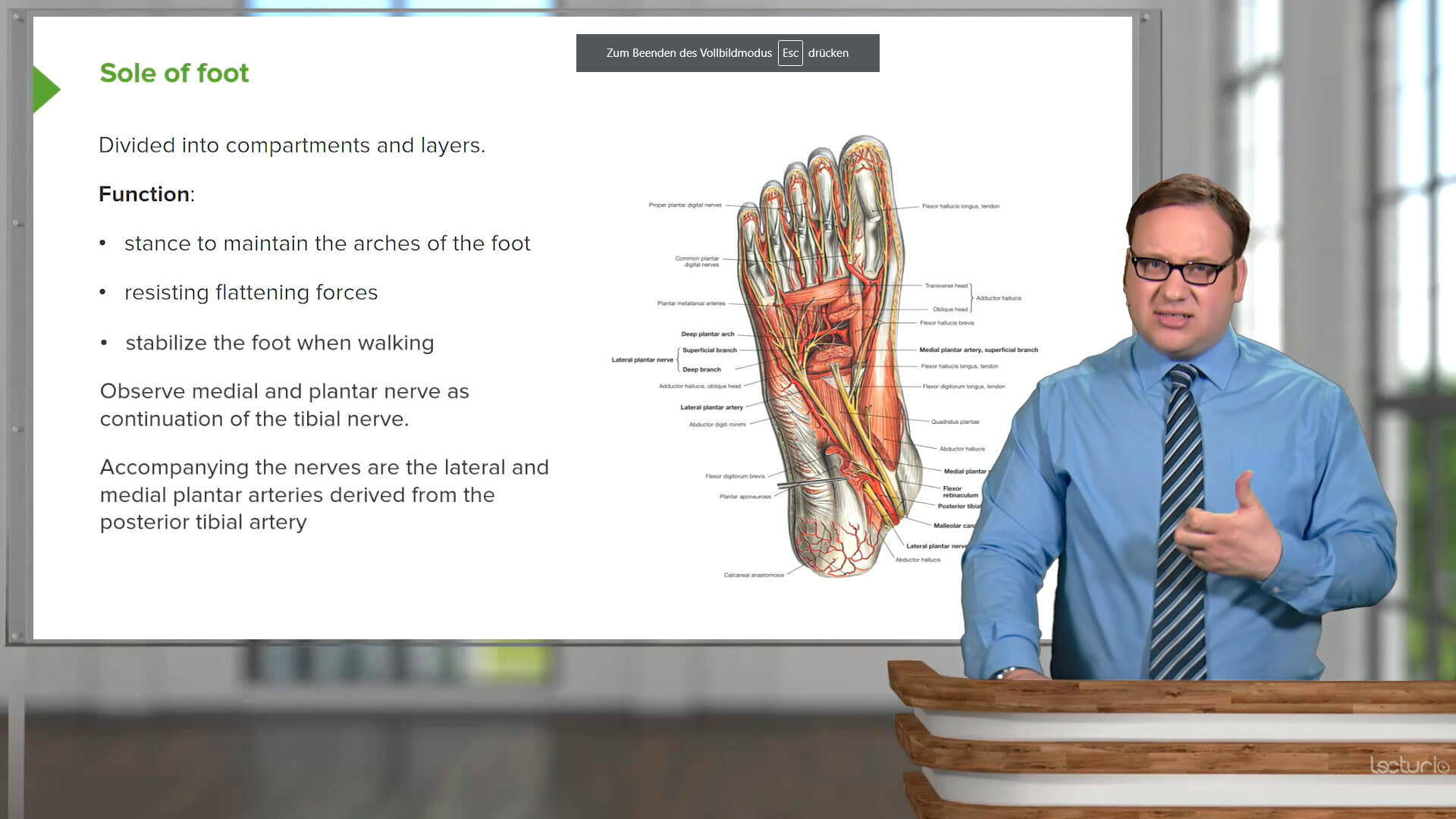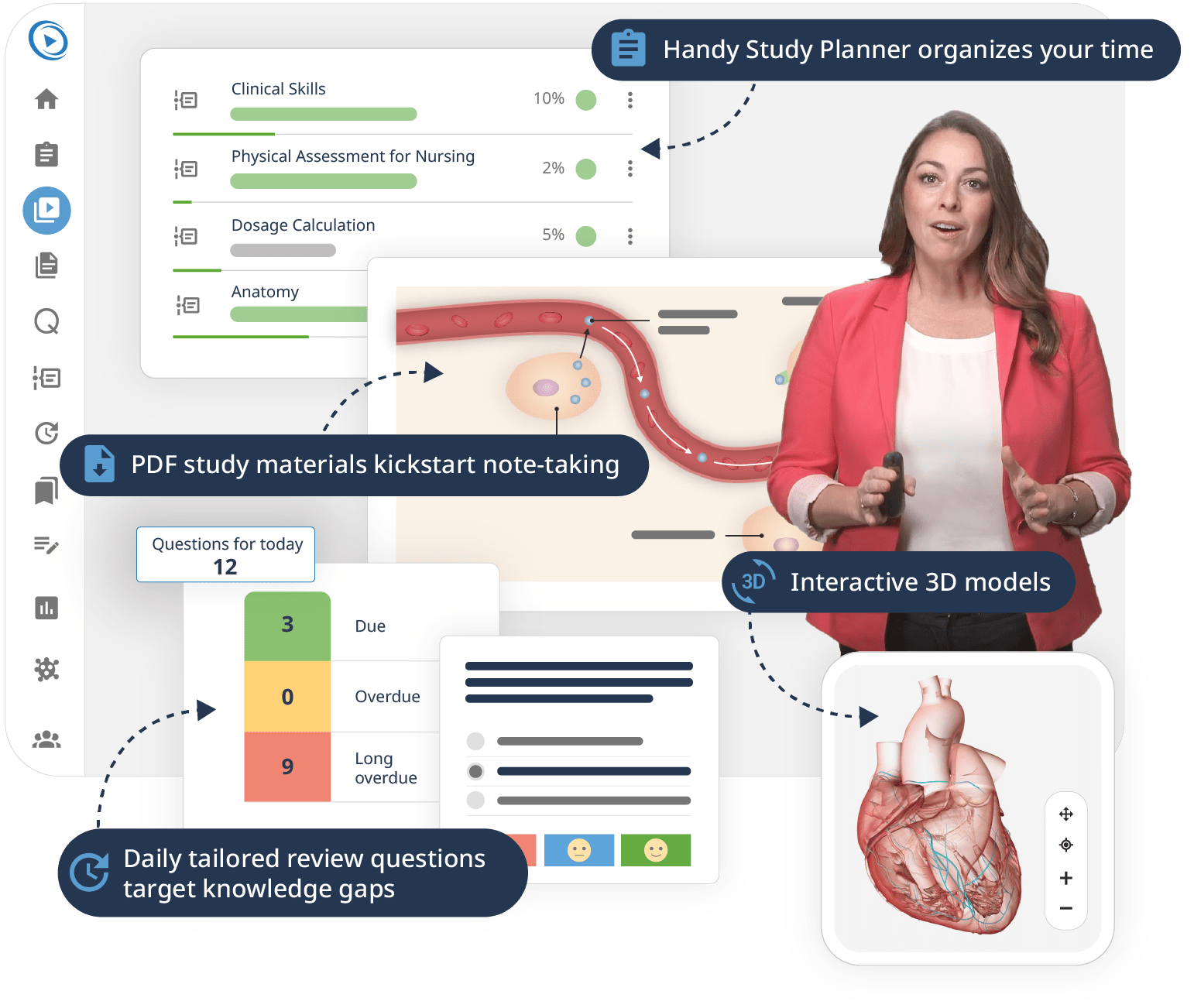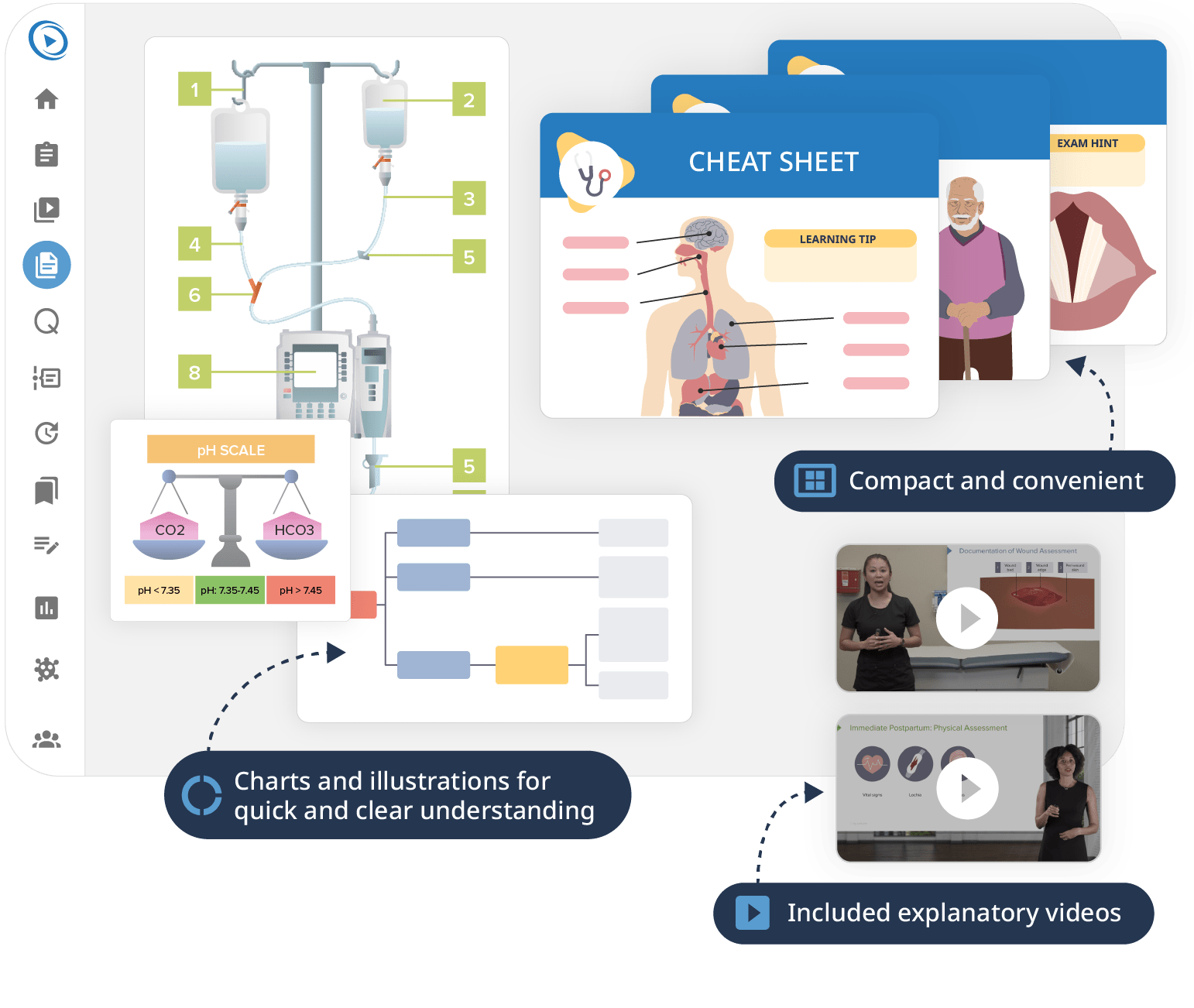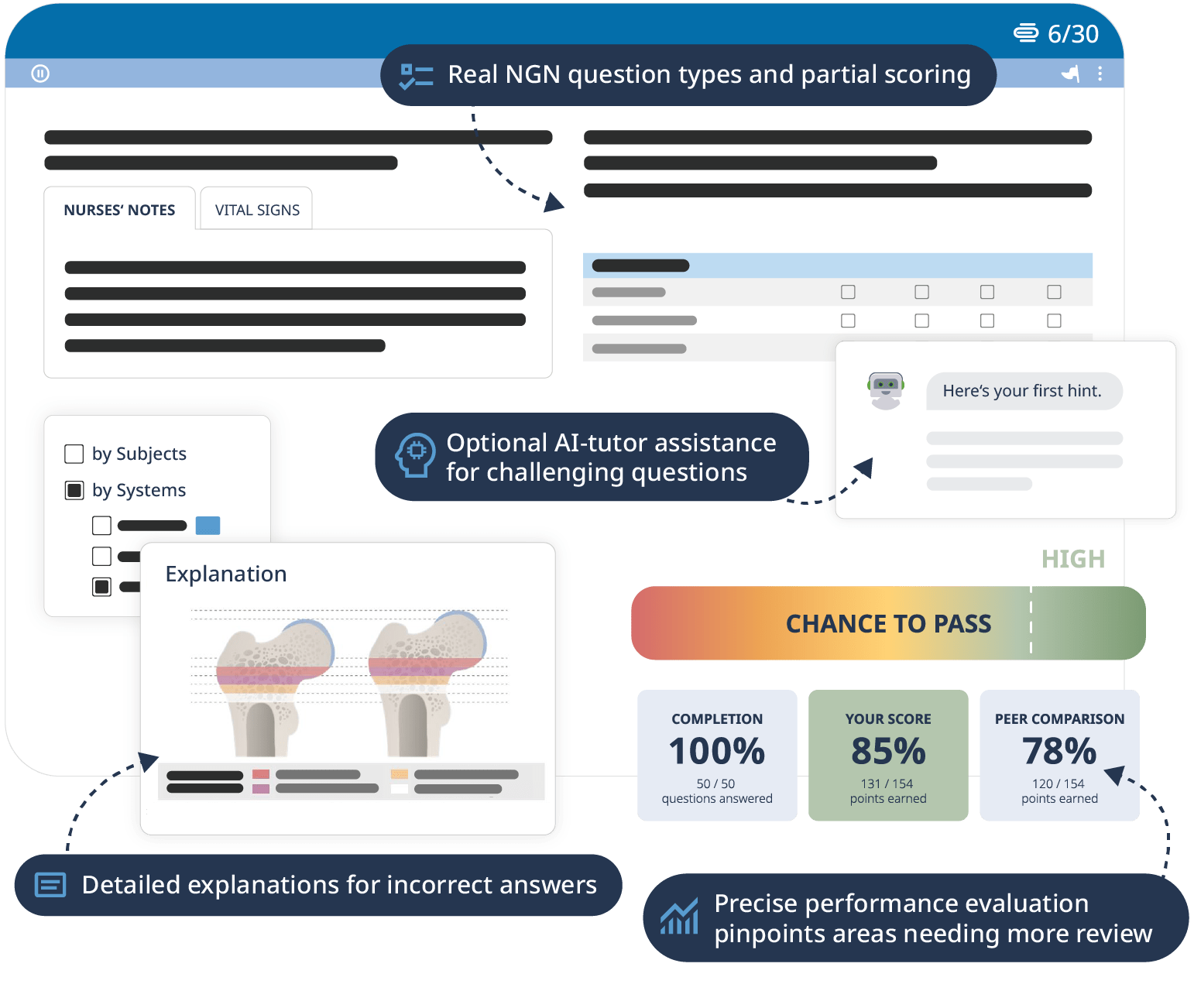Start your online physical assessment class
taught by Samantha Rhea, RN and Stephen Holt, MD
Performing a nursing assessment, or head-to-toe assessment, is one of the most foundational nursing skills. Getting thrown into clinical not knowing where to start with a client can be intimidating if you don’t feel well-prepared.
This course will teach you how to comprehensively assess a client from head to toe. Top educators currently engaged in hands-on patient care lead you through all important aspects of physical assessment, giving concrete advice on what to look for: from auscultating lung sounds to listening for cardiac murmurs, judging neurological status, and documenting your findings correctly. The assessments are demonstrated step-by-step in a series of Video Lessons to make you ready to examine your own clients.
An adaptive learning algorithm, downloadable Cheat Sheets, and a NCLEX-style Qbank are part of the learning platform, boosting retention and understanding. By the end of this course, you will feel confident to conduct a thorough physical assessment of a client.


















